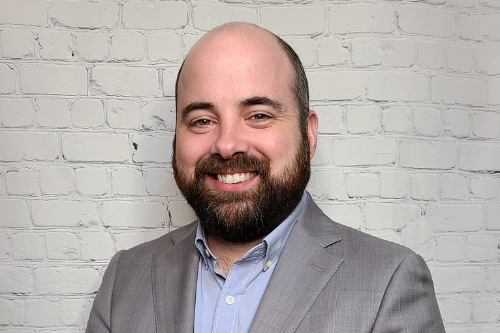

This article was produced in partnership with Economical Insurance
Karen Surca of Insurance Business Canada sat down with Jim English, senior technical specialist at Economical insurance and Marc de Bruyn, director risk services with Economical Insurance, to discuss loss prevention and the top tips to help mitigate claims on the job site.
When it comes to commercial construction, there is a lot to cover beyond a good coat of paint and proper flooring. Before any of these finishing touches can take shape on a commercial construction project, it is paramount that there be in place proper practices by general contractors, along with the necessary insurance coverage to cover these commercial projects when things go wrong.
Jim English (pictured above), senior technical specialist at Economical Insurance, explains to Insurance Business Canada that commercial contractors who are experienced and well-prepared must ensure that the right steps be taken before breaking ground on a new commercial project.
For mutual success, any insurance coverage provided is only beneficial if the general contractor follows best practices, particularly in the realm of loss prevention.
Read next: Economical innovation
“Think of loss prevention on the job as being what we see that prevents or mitigates claims. Health and safety protocol is very important, ensuring that a contractor is adhering to their health and safety manual. These manuals address life safety first and foremost, and once life safety is looked after, it does lead directly to physical assets — protecting the property,” English pointed out.
Physical assets, English pointed out, can include ensuring that proper fencing is installed around the job site, properly and safely locking up tools and, for larger construction projects, ensuring that GPS tracking is installed in equipment.
Another key area English highlighted would include ensuring that general contractors have hot works permits, which provide the proper procedures to cover any activities that may represent an increased fire risk, such as a welding operation.
Marc de Bruyn (pictured below), director, risk services at Economical Insurance, explained that there are three steps to follow for general contractors in loss prevention.

The first step that the following steps hinge on is the need for general contractors to be able to provide suitable documentation when embarking on a new commercial project.
“A lot of what we are looking for on the job site is the proper documentation. This is always going to be key. If they want to do things correctly, they will need proper documentation to support the work, and this documentation will prompt better practices,” de Bruyn stated.
Commercial contractors should be able to ask themselves the right questions. What is the project trying to achieve? Are the plans being carefully followed? Are the right tools being used for the project?
These questions, English and de Bruyn pointed out, are used to help general contractors keep on track of the project and ensure that a commercial general contractor is not deviating from their plan, as well as ensuring that the plan is installed correctly.
Step three, de Bruyn explained, is devoted to post-project reviews.
“Looking after the fact. Looking for what went wrong and what could have been done better. When there are losses? We need to look for a good thorough investigation to pinpoint any near misses, a root cause analysis,” de Bruyn said.
“As insurance providers, we want to see our partners who are digging deep to see where things went wrong. I feel this is very important. Taking that next step to understand what is driving some of the incidents that are happening on site and how these can be corrected and avoided,” de Bruyn concluded.
Both English and de Bruyn agreed that looking at the overall standards and the process of sub-contractor selection form the last part of the loss prevention puzzle.
“Looking for really in-depth hiring, screening, and training of workers, labourers, and supervisors is key. Make sure the right people are there with the right background and experience and work culture fit,” de Bruyn stated.
“General commercial contractors also should be making sure that the right equipment is there, as well as ensuring the equipment is well serviced and used correctly. All of this helps from a safety perspective,” English continued.
In the realm of loss prevention, the hiring of the right sub-contractors and general contractors is key.
“Make sure that those hired to work are well experienced. Selecting the right general contractor is central to mitigating risk. Risk services, either virtually or on-site, will conduct visits and will review the exposure risks, providing some good input and feedback to the contractor,” English stated.
Meanwhile, technology has helped to streamline the loss prevention process.
“A lot of the risk mitigation technology that we are seeing are cloud-based solutions to monitor workflows and project risks, so really drilling down project milestones so everyone has the centralized tracking system, and everyone can be on the same page in terms of where the project is going,” de Bruyn said.
“I think that software and cloud-based solutions have driven that forward and given access to everyone with mobile devices. It is not a secret in the foreman’s office of what is going on day to day. It is really in the hands of everybody,” de Bruyn concluded.
English and de Bruyn pointed to other technology that has come into play, including water loss mitigation to detect early water damage with automatic shutoffs, as well as built-in notification systems to warn contractors. GPS and asset tracking also represent technological streamlining, as well as the added role of online virtual training about standard operational procedures.
English and de Bruyn both agreed firmly on the bottom line when it comes to risk mitigation.
“There is a host of things that can be done in loss prevention. Most of it is common sense and planning projects correctly while protecting the personal and physical assets on the job,” English and de Bruyn concluded.
Jim English is a senior technical specialist with Economical in Canada. He has spent his career working many years in the insurance, reinsurance, and brokerage side prior to joining Economical in February of 2021.
Marc de Bruyn is the director of risk services for Economical Insurance. He has spent his years in the industry working in loss control, collaborating with customers, brokers and underwriters to understand and manage their risk. De Bruyn joined Economical in August of 2021.
